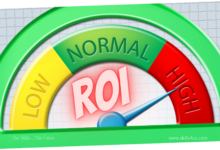
Training Needs Analysis (TNA) in Human Resource Management (HRM)
A TNA in HRM determines the type of training required and provides details related to its implementation. It is also a tool for identifying new skills, knowledge, and attitudes that employees need to acquire to improve performance.
TNA in HRM helps organizations discover their employees’ skills and training gaps to perform current and future jobs efficiently and effectively.
Note that HR professionals use the analysis very carefully to design the appropriate training program to meet employees’ skills and training requirements to enhance productivity and achieve the goals and objectives set by the organization.
The HRM Department prioritizes the continuous learning process as it keeps employees’ skills updated and improves their performance. Note that the TNA includes improving the necessary skills to perform the current or future job with great distinction.
Objectives of TNA
- Ensure that customer requirements of the product/service are met with the help of skilled personnel.
- Assisting the organization in setting and achieving appropriate goals.
- Create an appropriate performance standard that can be used to judge employee productivity.
- Enable employees to assess their existing skill sets and continually upgrade their knowledge to improve their performance.
- Highlight work quality issues in the organization and identify areas of focus that need improvement.
Components of a TNA
- Organizational level: Providing training to an employee that is not aligned with business objectives is a waste of resources. The training programs conducted in the organization must help the employees achieve the organization’s strategic business objectives. Training at the organizational level needs to be analyzed using data sources such as business objectives, skills inventory, employee inventory, corporate culture, and customer satisfaction data to determine employee training needs.
- Operational Level: It is a job level analysis used to determine the type of training an employee needs to achieve work proficiency. It specifies the knowledge and skill required to perform a particular job in the organization. Training at the operational level needs to be analyzed using data sources such as work performance standards, job descriptions, job specifications, and functional problem analysis to determine the employee’s training needs.
- The individual level: the difference between the employee’s expected and actual performance is analyzed to reach the employee’s training needs. Training at the individual level needs to be analyzed using data sources such as performance appraisals, employee skills assessments, interviews and questionnaires, client surveys, and work samples to determine the employee’s training needs.
TNA Process
The organization uses different stages of TNA based on the personnel records kept in the HRM Department. However, a consistent process is followed in all types of TNA. Here are the four steps to the TNA process:
- Performance Gap Analysis: Here, the current and required operating results of the employee’s performance are compared to identify performance gaps.
- Root Cause Analysis: This method identifies the underlying problem behind performance gaps. Issues are categorized into five categories such as skill, resources, incentives, motivation, and information such as feedback.
- Needs Analysis: includes trainees analysis, job analysis, task analysis, environment analysis, and cost-benefit analysis. A detailed analysis is conducted to design and implement an appropriate intervention to resolve performance issues.
- Recommendations: A suitable training solution is suggested. Where the appropriate training program to be run by the organization is determined to improve overall work productivity.
Advantages of TNA
- Identifies employees in dire training needs for good organizational performance.
- Determines the type of training required in terms of skills, knowledge, abilities, competence, and employee behavior.
- Assists management in directing resources to high-priority areas for training.
- Helps employees and organizations improve work productivity.
- Helps the organization improve the quality of its services and thus helps retain customers.
Disadvantages of TNA
- The process can take a long time as it involves a lot of assessments and surveys.
- Can be costly for the organization, as it is often outsourced.
- Low employee response rate to internal surveys can harm their effectiveness.
- Employees are often reluctant to provide an honest response to a self-evaluation which can influence the outcome of the analysis.
The ability to directly identify and address skill problems will help reduce the issues that can arise because of them. Employees’ skills learned last year may not meet the need for work next year! Thus, a TNA in HRM can be conducted either proactively or reactively. The reactive analysis is performed when some discrepancy in performance is identified. As for the proactive analysis, it anticipates the future as it evaluates the future needs of the organization and the needs that may arise in the event of an expansion and development of the business.



